Storing Your Harvest
Frosty weather has arrived and many of us are busy harvesting our vegetables. You can extend the enjoyment of your harvest by storing your vegetables properly.
Most vegetables will store best at around 32°F, but you can store most vegetables for 2–3 months at temps around 50°F and in high humidity. Most of us do not have a root cellar, but we likely have some space where we can keep our produce cool: an unheated garage, mud room or a cool area in the basement.
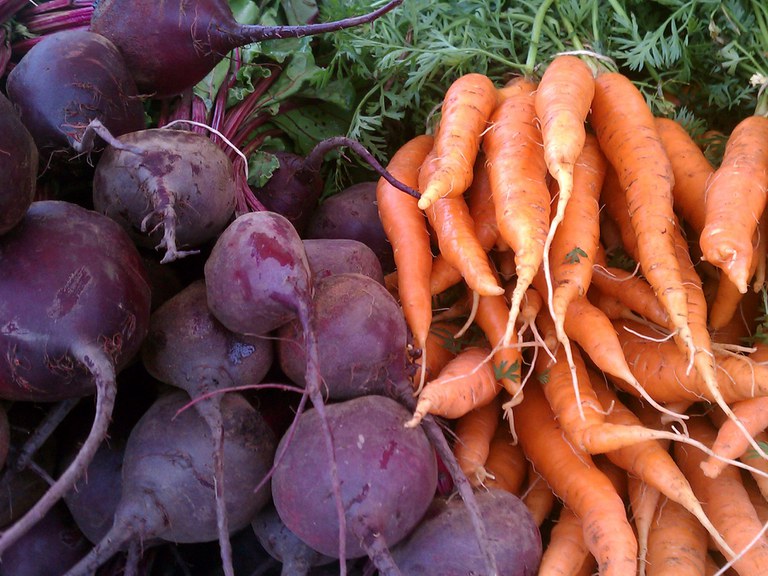 |
Beets and CarrotsCold and Moist Harvest before a killing frost (28°F) and when the soil is dry. Gently remove the soil. Do not scrape roots. Slice off the tap roots from beets. Do not wash roots before storing. This promotes rotting and removes beneficial bacteria in the soil near the skin that fight decay. Wash roots only before you eat them. Trim each top to ¼ inch. Longer tops will lead to more decay. Shorter tops will cause roots to dry. Store in perforated plastic bags or in sealed containers filled with damp sand. Perforated bags will increase humidity and allow for air circulation. Store at 32–40°F and 90–100% RH. |
|
|
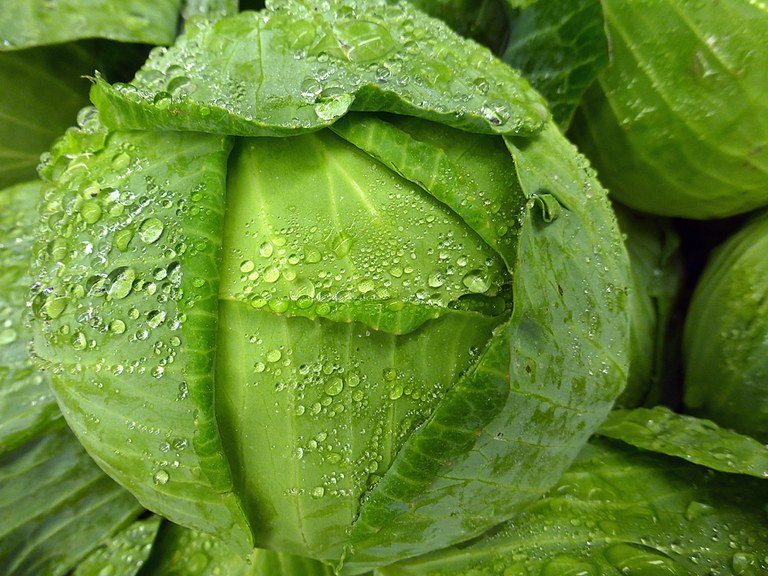 |
CabbageCold and Moist Keep a few of the outer wrapper leaves attached. Store at 32°F and 90–100% RH. |
|
|
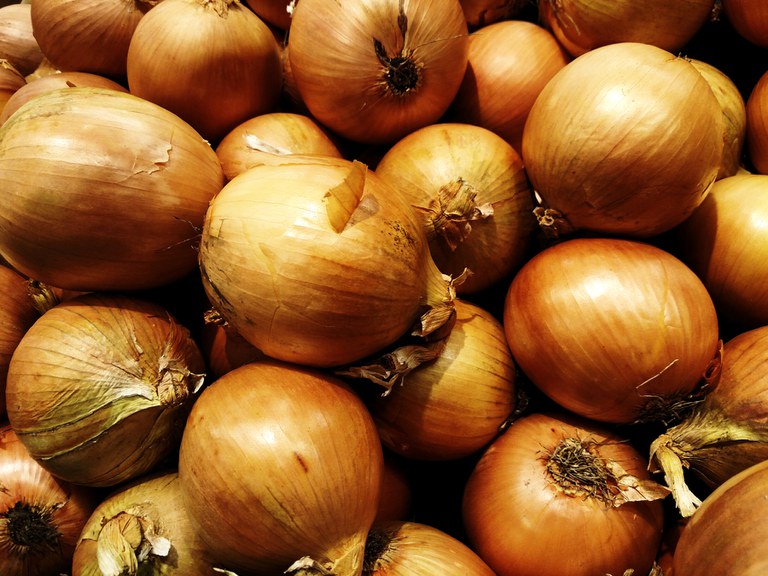 |
OnionsCold and Dry Harvest when tops have fallen over. Keep in the garden for a couple days to dry. Shake off loose dirt. Lay out the bulbs in a single layer in a warm, airy place like a shed or garage. Cure until the necks wither (2–4 weeks). Trim tops to 1 inch; trim roots. Store in mesh bags in a dark, airy place, 32–40°F with 65% RH. Store away from potatoes, which give off moisture. Sweet Spanish types will store for a few weeks; specialty storage varieties may store up to 6 months. |
|
|
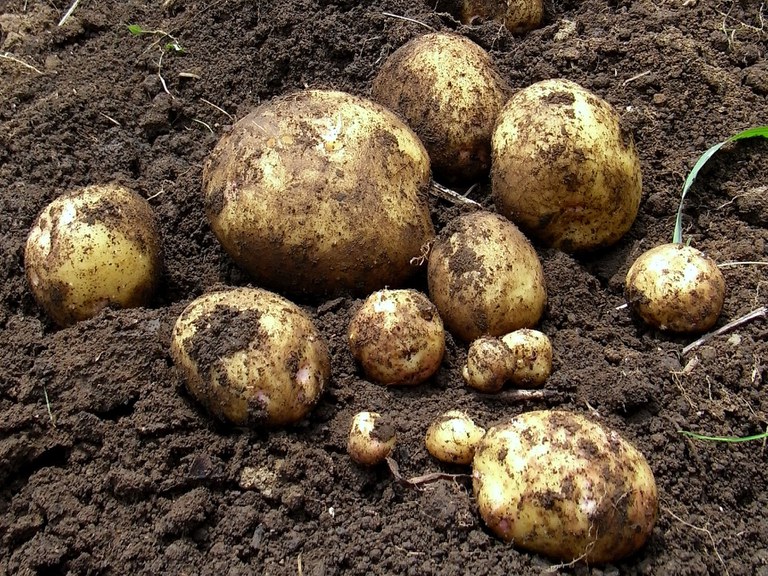 |
PotatoesVery Cool and Moist Harvest after the foliage dies back. This allows the skin to set on the tubers. Do not let tubers freeze in the ground. Use a spading fork to dig tubers. Remove loose dirt and avoid bruising. Do not wash. Cure for 2 weeks in a dark, well-ventilated area with moderate temperatures (50s) and high humidity (80–90% RH). Store in mesh or perforated bags, crates or vented boxes. A very dark, cool (42–55°F), humid (90% RH) site is best. Colder temperatures will increase sweetness and darken fry color. Warmer temperatures may encourage sprouting. |
|
|
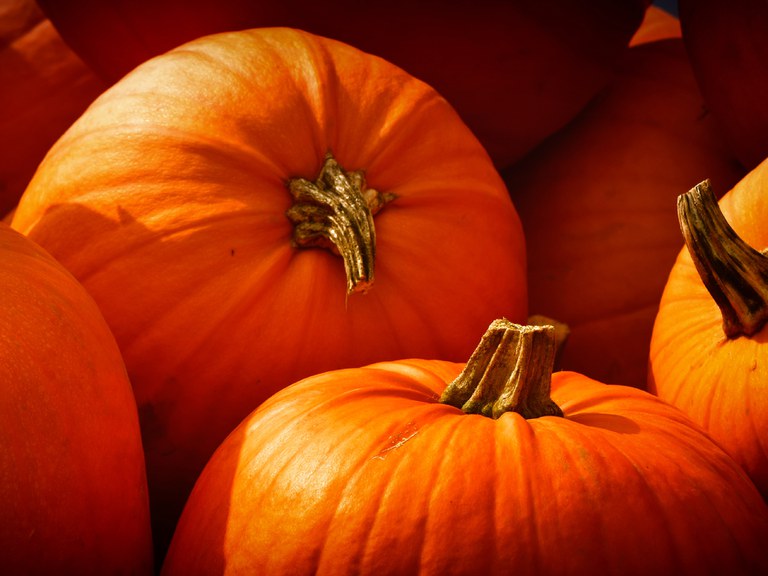 |
PumpkinsCool and Dry Harvest before a killing frost (28°F). Leave a few inches of stem attached. Avoid picking up pumpkins by their handles and do not bruise. Fruits with an orange blush will turn more orange if exposed to sunlight and warmth. Place on a deck or indoors near a sunny window; green side toward the sun. Keep indoors during hard frosts. Cure pumpkins in a warm (80°F) spot for 10 days for long-term storage. Wipe but don’t wash fruits. Store on pallets at 50–60°F, 50–70% RH and good ventilation. |
|
|
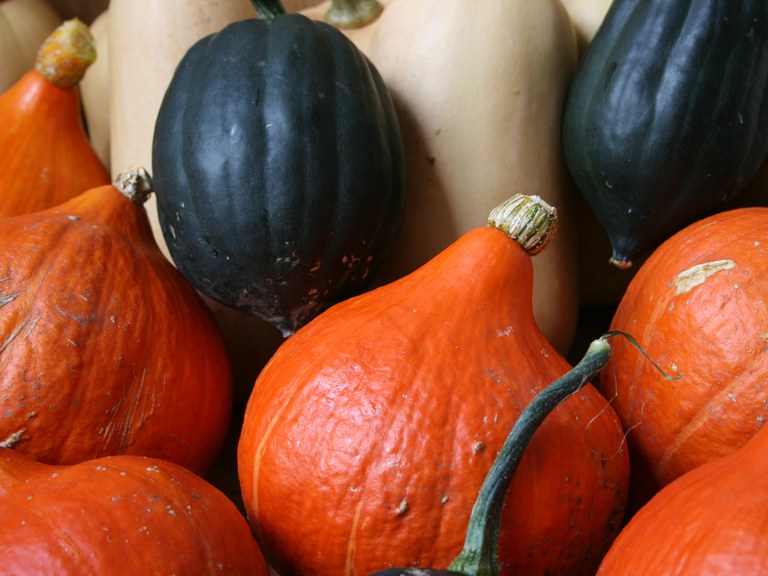 |
Winter SquashCool and Dry Signs of ripeness include dry stems, a dark-orange spot on fruit bottoms, and hard, glossy rinds. Harvest before a killing frost (28°F). Leave at least one inch of stem. Wipe but don’t wash fruit. Cure buttercup, butternut and hubbard squash in a warm (80°F) spot for 10 days to toughen skin for storage. Acorn squash will not store long and do not need to be cured. Store squash on pallets at 50–60°F, 50–70% RH and good ventilation. |
Written by Tom Kalb, Extension Horticulturist, North Dakota State University.
Sources:
Jauron, R. and G. Wallace. 2014. Yard and Garden: Harvest, dry and store onions, garlic and shallots. Iowa State University: Ames.
Johnny’s Selected Seeds. Storage crops: Post-Harvest handling & storage guidelines. Accessed October 2020. Albion, Maine.
Woodell, L., N. Olsen and J. Wilson. 2009. Options for storing potatoes at home. University of Idaho: Moscow.
Photos were made available under Creative Commons licenses specified by the photographers: bluekdesign; arbyreed; Thad Zajdowicz; Ishikawa Ken; Alexas Fotos; and Nick Warner.





